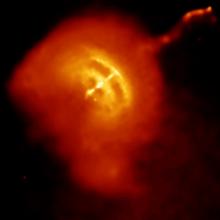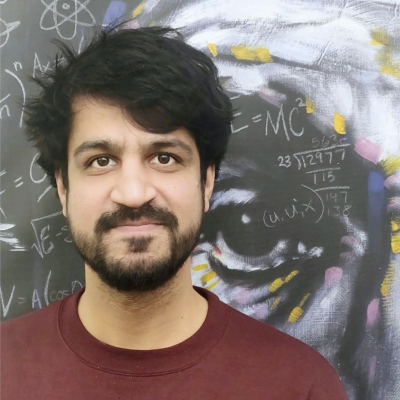
When large stars many times more massive than the sun exhaust their nuclear fuel, they eventually collapse and produce a supernova, an explosion that can be observed across the cosmos. In many cases, the explosion will leave behind a neutron star, a collapsed stellar core that will have a mass larger than the sun with a radius of less than 10 miles across. These are the densest objects in the universe not found inside black holes! They can spin incredibly rapidly, rotating in fractions of a second, and when they have large magnetic fields can be seen as pulsars, beaming radio waves into space like a lighthouse.
When a neutron star spins so rapidly, any small bumps on the surface will generate periodic gravitational waves (GWs). They are very weak compared with the waves from inspiralling and merging neutron stars and/or black holes, but because the signal is continuous, we may be able to observe GWs from spinning neutron stars in our own galaxy. Possible sources include pulsars, central compact objects in supernova remnants, and neutron stars in low-mass X-ray binaries (LMXBs). In an LMXB, a compact object accretes matter from a less-massive companion. The accretion can "spin up" the neutron star to the point where GWs are emitted in the sensitive frequency band of detectors like LIGO and Virgo. On the other hand, the binary orbit Doppler-shifts the signal from the neutron star, complicating the detection problem.
In the CCRG, we develop and apply the search methods to search for continuous GWs, especially those from the brightest LMXB, Scorpius X-1. The long observation times mean the search is very sensitive to the spin frequency and other parameters, and different approaches are needed depending on how well known those parameters are.







